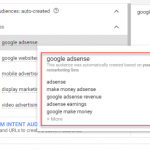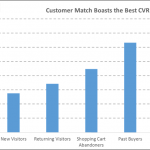The four best possible productiveness tricks I learned At Google
A two-year tenure at Google gave a crew of people the productiveness skills to start their own project.
August 31, 2015
When Google obtained the net photograph editor Picnik in 2010, CMO Lisa Conquergood and the rest of the Picnik staff went, too. They worked on the web page until Google narrowed its focal point and closed Picnik in 2012. still believing in the idea that, the unique Picnik workforce left Google and based the photo-enhancing website online PicMonkey.
then again, throughout her two years’ tenure at Google, Conquergood received a possibility to experience the productivity and workflow in one of the crucial world’s most successful firms.
“Google’s entire mission is to organize the arena’s information,” she says. “They try this internally as well.”
while a startup may also be a lot nimbler than a big service provider, Conquergood and the remainder of the PicMonkey group made up our minds to include 4 productivity tips they discovered at Google in their new challenge.
1. Use expertise to maintain remote staff shut
Google has a large worker base of passionate individuals, and Conquergood says they have to search out how you can be productive and efficient at scale. the company creates its own productiveness instruments, a few of which are later released to the public, akin to Google Hangout.
“Google has places of work disbursed all over the place the sector,” Conquergood says. “It’s essential to get people together quickly and easily. convention calls don’t give you the capability to show one thing to your monitor to collaborate. Google Hangout used to be created to let employees do that.”
PicMonkey makes use of Hangouts for meetings with companions: “It permits us to remain related in a extra personal manner versus a disembodied voice on the phone,” says Conquergood. “there is much less tuning out on video calls as you might be being watched and are much less prone to take a look at your phone or have a facet conversation. studying individuals’s body language and expressions are an important a part of verbal exchange, and video offers this arms down over a cellphone.”
2. get rid of Silos
each and every week, Google staff are requested to finish one thing known as Snippets, says Conquergood. They document what they comprehensive all through the prior week and what they’ve planned for the week ahead.
“the speculation right here is transparency,” she says. “anyone can get admission to anyone else’s Snippets. If I’m inquisitive about taking part on a challenge, i can have a look at Snippets and spot if any individual is already working on the same thing.”
In a small startup, there used to be no want to construct infrastructure to accomplish the same goal. instead, PicMonkey makes use of one thing referred to as a “day-to-day Standup” the place employees share their three major focuses for the day, and if they’ve any roadblocks to completing these objects.
“Like Snippets, that is our contact point with every different,” says Conquergood. “Transparency helps us be tremendous collaborative and fluid.”
three. grasp Your Inbox
the amount of e-mail Conquergood bought whereas at Google was overwhelming. while the corporate doesn’t teach staff on the use of Gmail more efficiently, Conquergood says documentation and phrase of mouth changed into helpful in finding out time-saving methods.
one in all her colleagues shared the existence of a mute button the place that you would be able to decide out of multiple-recipient e-mail exchanges which might be no longer relevant to you. Conquergood also makes use of the priority inbox instrument that funnels necessary emails to the highest of your inbox. and she or he sets up sensible filters to section out emails that handiest need to be checked once per week.
At PicMonkey, Conquergood put these tools to use, too, but this time she places priority designation on exterior emails as a substitute of interior. “I get fewer emails, however now i have a better proportion which can be vital,” she says. “external emails are regularly about industry development, and i need to look at these first.”
4. Set targets before conferences
conferences at Google had been significant, says Conquergood. “prior to stepping into, we all the time knew the purpose of the assembly, and ahead of we left, we were crisp on what the subsequent tasks were and who was once assigned to them,” she says.
This Google means is much more important in a startup, says Conquergood, where it’s vital to be clear about who owns the subsequent steps.
“whereas the advantage of a small group is that individuals are wearing a couple of hats and diving in to get issues completed, it will result in overlap or assumptions that any individual else is owning a selected job,” she says. “To keep away from overfunction or underfunction every time a role or mission is mentioned, there’s a clear task and acknowledgement of who’s using or on point.”
related: productivity guidelines from the Busiest individuals
(82)














